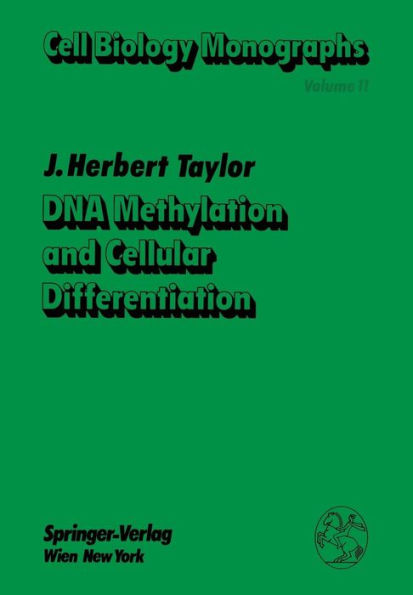DNA Methylation and Cellular Differentiation
In 1977 I wrote a grant proposal in which I applied to study developmental patterns in enzymatic methylation of DNA in eukaryotes. One part of the proposal was to assay cells at different embryonic developmental stages for maintenance and de novo type methylase activity. With one exception the referees, probably developmental biologists, recommended that the work not be supported because there was no evidence that methylation plays any role in eukaryotic gene regulation. Aside from proving that innovative ideas can seldom be used to successfully compete for grant funds, the skepticism of biologists toward methylation as a regulatory mechanism was, and still is, widespread even among some of those who investigate the problem. That is a healthy situation for all points of view should be brought to bear on a problem of such importance. However, to deny funds to investigate a problem because one has already formed an opinion without evidence is hardly commendable. The great skepticism about the significance of DNA methylation is based in part on the evidence that it is absent or very little used in Drosophila, a favorite organism for genetic and developmental studies. There now remains little doubt that methylation of cytosine in certain CpG sites can strikingly affect the transcription of sequences 3' to the methylated doublet. How this inhibition operates and to what extent it is utilized in cells is still debatable.
1021128278
DNA Methylation and Cellular Differentiation
In 1977 I wrote a grant proposal in which I applied to study developmental patterns in enzymatic methylation of DNA in eukaryotes. One part of the proposal was to assay cells at different embryonic developmental stages for maintenance and de novo type methylase activity. With one exception the referees, probably developmental biologists, recommended that the work not be supported because there was no evidence that methylation plays any role in eukaryotic gene regulation. Aside from proving that innovative ideas can seldom be used to successfully compete for grant funds, the skepticism of biologists toward methylation as a regulatory mechanism was, and still is, widespread even among some of those who investigate the problem. That is a healthy situation for all points of view should be brought to bear on a problem of such importance. However, to deny funds to investigate a problem because one has already formed an opinion without evidence is hardly commendable. The great skepticism about the significance of DNA methylation is based in part on the evidence that it is absent or very little used in Drosophila, a favorite organism for genetic and developmental studies. There now remains little doubt that methylation of cytosine in certain CpG sites can strikingly affect the transcription of sequences 3' to the methylated doublet. How this inhibition operates and to what extent it is utilized in cells is still debatable.
54.99
In Stock
5
1

DNA Methylation and Cellular Differentiation
138
DNA Methylation and Cellular Differentiation
138Paperback(Softcover reprint of the original 1st ed. 1984)
$54.99
54.99
In Stock

Product Details
| ISBN-13: | 9783709187234 |
|---|---|
| Publisher: | Springer Vienna |
| Publication date: | 12/30/2011 |
| Series: | Cell Biology Monographs , #11 |
| Edition description: | Softcover reprint of the original 1st ed. 1984 |
| Pages: | 138 |
| Product dimensions: | 6.69(w) x 9.61(h) x 0.01(d) |
From the B&N Reads Blog
